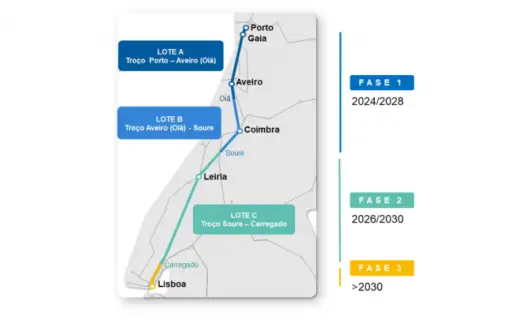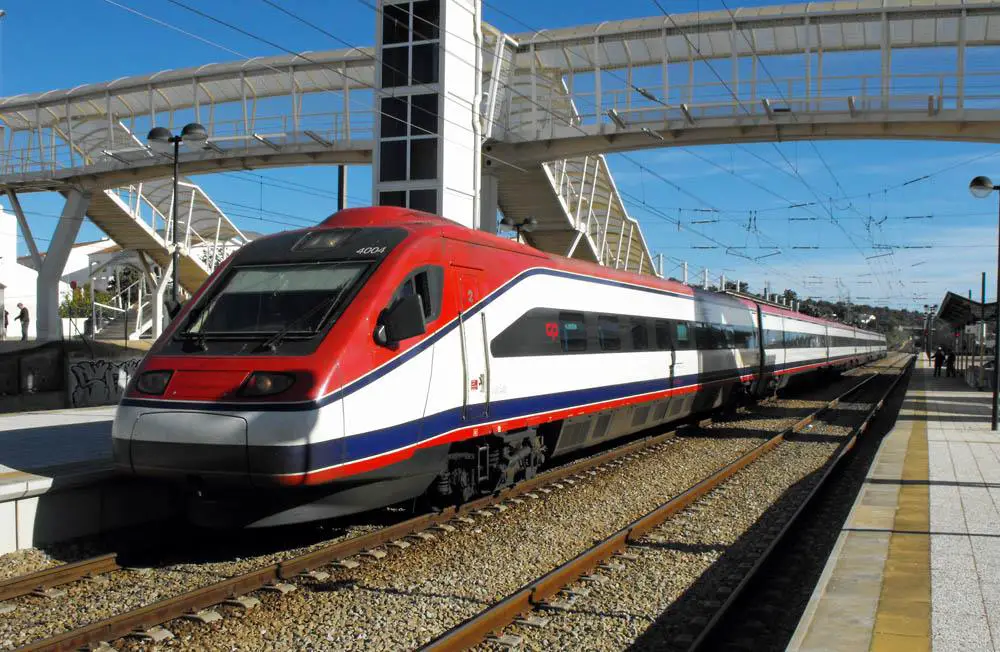The first tender for the proposed Lisbon–Porto high-speed rail line project has been announced. The tender was put out by Infraestruturas de Portugal, S.A. (IP), a state-owned company in charge of the management of the Portuguese rail and road infrastructure.
This tender concerns the implementation of the first section or rather phase of the project that seeks to link the Portuguese capital city, Lisbon, and the country’s second-largest city Porto. This phase is 70 kilometres long from Porto to Soure. It will feature a total of 11.6 kilometres of tunnels, 9.5 kilometres of bridges and 2.8 kilometres of viaducts.
Reportedly, the first phase of the Lisbon–Porto high-speed rail line project requires an investment of US$ 2.1 billion or its thereabouts. The project will be carried out through a public-private partnership (PPP) model with the work expected to begin in 2024 and be completed four years later in 2028.
Implementation of the other phases of the Lisbon–Porto high-speed rail line project

The Lisbon–Porto high-speed rail line project is set to be carried out in a total of three phases including the aforementioned.
The second phase of the project runs between Soure and Carregado and it is set to be carried out between 2026 and 2030. The cost of this section of the project is yet to be made public. The third phase of the Lisbon–Porto high-speed rail line project, on the other hand, involves the construction of a small section between Carregado and Lisbon. It is set to be carried out later than 2030.
Overall, the Lisbon–Porto high-speed rail line will be 290 kilometres long featuring Iberian gauge lines. The latter is a railway track with a gauge of 1,668 mm. It is mostly used in Spain as well as Portugal, and it is the second-widest gauge in use anywhere else in the world.
According to IP Vice President Carols Fernandes the decision to build the track the Iberian gauge is based on the need to ensure that the Lisbon–Porto high-speed rail line can be connected with the existing tracks and across the border to Spain’s high-speed line.
Expectations for the project
With a design speed of 300km/h, upon completion Lisbon–Porto high-speed rail line is expected to cut travel time between Lisbon and Porto by more than half. Once operational, passengers will be able to move between the two cities in 75 minutes without stops, and 105 minutes at most with stops.
Some of the stops will be in Leiria, Coimbra, Aveiro, Vila Nova de Gaia and Santo Ovídio. Not all of the stops will be new. Some of the already existing stations will only be expanded to service the new high-speed line. The only new station will be built in Vila Nova de Gaia. This station will be known as the Gaia-Santo Ovídio.
A new railway bridge will also be built to carry the Lisbon–Porto high-speed rail line over the river Douro between Porto and Gaia.
Also Read
Contract signed for construction of 1st section of Rail Baltica in Estonia
Indonesia’s High-Speed Railway Pioneering Southeast Asia’s Transport Revolution
Construction of the Brightline West high-speed California to Las Vegas rail to begin

